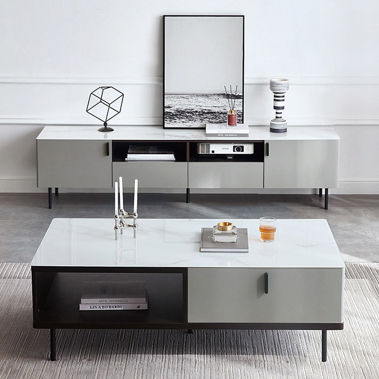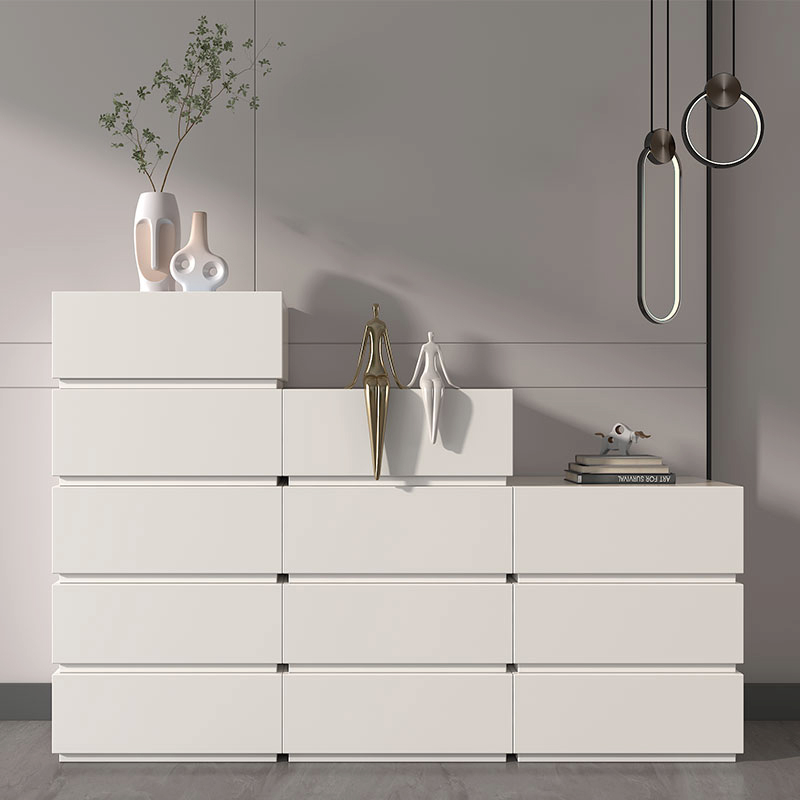Panel furniture—crafted from materials like particleboard, MDF (medium-density fiberboard), or plywood with veneer, laminate, or painted finishes—has become a staple in modern homes and offices thanks to its affordability, versatility, and sleek design. However, its surface is often more sensitive than solid wood, requiring gentle, proper cleaning to avoid damage like peeling, discoloration, or scratches. Below is a step-by-step guide to cleaning panel furniture effectively, tackling common stains, and preserving its appearance for years to come.
Pre-Cleaning Preparation: Gather Tools & Test First
Before diving into cleaning, gather the right supplies to protect your furniture:
Soft microfiber cloths (ideal for dusting and wiping, as they trap dirt without scratching)
Lint-free cotton cloths (for drying and buffing)
Mild cleaning solutions: neutral dish soap (e.g., Dawn), white vinegar, or commercial furniture cleaners designed for laminate/veneer (avoid abrasive or solvent-based products)
Warm (not hot) water
A soft-bristled brush (for hard-to-reach crevices, like drawer handles or carvings)
Toothbrush (for spot-cleaning small stains)
Critical Step: Patch TestAlways test any cleaning solution on an inconspicuous area (e.g., the back of a cabinet, under a shelf) first. Apply a small amount, wipe gently, and let it dry to ensure it doesn’t fade the finish, strip veneer, or cause discoloration.
Step 1: Regular Dusting (Prevent Scratches)
Dust buildup is the most common issue for panel furniture, and if left unchecked, it can scratch the surface when wiped with force.
- Use a dry microfiber cloth to dust surfaces in gentle, circular motions (avoid back-and-forth rubbing, which can push dust particles into the finish).
- For tight spaces (e.g., between cabinet doors, around handles), use a soft-bristled brush to loosen dust, then wipe it away with a cloth.
- Dust at least once a week—more frequently in high-traffic areas or homes with pets/hair.
Step 2: Gentle Daily Cleaning (Remove Grime)
For routine cleaning (e.g., after spills, finger smudges, or general dirt), stick to a mild, water-based solution:
- Mix 1–2 teaspoons of neutral dish soap with 4 cups of warm water (avoid over-sudsing, as excess soap can leave a sticky residue).
- Dampen a microfiber cloth in the solution—wring it out thoroughly (the cloth should be slightly damp, not soaking wet). Excess water can seep into the panel’s edges, causing swelling or warping.
- Wipe the furniture surface in smooth, even strokes, focusing on dirty areas. For laminate or veneer finishes, follow the direction of the grain (if visible) to avoid streaks.
- Immediately dry the surface with a clean, dry lint-free cloth to prevent water spots or moisture damage.
- For an extra shine (especially for painted or glossy finishes), buff lightly with a dry microfiber cloth after drying.
Step 3: Tackling Common Stains (Spot-Cleaning Guide)
Panel furniture often encounters spills and stains—here’s how to remove them without damaging the finish:
- Water Spots/Rings: Blot the area immediately with a dry cloth to absorb excess moisture. If a ring remains, mix equal parts white vinegar and warm water, dampen a cloth, and gently rub the spot. Dry thoroughly and buff with a soft cloth.
- Grease/Oil Stains: Sprinkle a small amount of baking soda on the stain (it acts as a mild abrasive without scratching) and gently rub with a damp cloth. Wipe away the baking soda with a clean, damp cloth, then dry. For stubborn grease, use a drop of dish soap on a damp cloth—avoid heavy pressure.
- Ink/Marker Stains: For fresh ink, dab (don’t rub!) with a cotton ball dipped in isopropyl alcohol (70% concentration). Rubbing alcohol breaks down ink without damaging most laminates/veneers, but test first! For dried ink, use a magic eraser (melamine foam) lightly—avoid scrubbing vigorously, as it can wear away the finish.
- Food Stains (e.g., ketchup, coffee): Blot the stain immediately to prevent it from setting. Wipe with a mild soapy solution, then rinse with a damp cloth (no soap) and dry. For dried food, soften it with a damp cloth for 1–2 minutes before wiping.
Scratches (Minor): For light scratches on laminate/veneer, use a furniture touch-up pen (matching the finish color) or rub a wax crayon (same shade) over the scratch, then buff with a dry cloth to blend.

Step 4: Avoid These Cleaning Mistakes (Protect the Finish)
Certain cleaning habits can ruin panel furniture—steer clear of these:
- Abrasive Tools: Never use steel wool, scouring pads, or rough sponges, as they scratch and dull the surface.
- Harsh Chemicals: Avoid bleach, ammonia, window cleaners (e.g., Windex), or solvent-based products (e.g., acetone, turpentine). These can strip veneer, fade paint, or dissolve laminate adhesives.
- Soaking Wet Cloths: Excess water seeps into the panel’s core, causing swelling, warping, or delamination (veneer peeling).
- Direct Sunlight: While not a cleaning mistake, prolonged sun exposure fades finishes—position furniture away from windows or use curtains to block UV rays.
- Hot Objects: Don’t place hot cups, pots, or appliances directly on the surface (use coasters or heat mats) to prevent heat damage (e.g., bubbling, discoloration).
Step 5: Long-Term Maintenance Tips
To keep your panel furniture looking new:
- Dust regularly to prevent scratch-causing buildup.
- Clean up spills within 5 minutes to avoid staining or moisture damage.
- Use coasters for drinks, placemats for food, and felt pads under heavy objects (e.g., vases, books) to prevent scratches.
- Avoid placing furniture near humid areas (e.g., bathrooms, kitchens without proper ventilation) or heating/cooling vents (dry air can crack finishes).
- Polish laminate/veneer furniture every 3–6 months with a specialized furniture polish (avoid silicone-based polishes, which leave a greasy residue). For painted finishes, a light dusting and occasional mild cleaning are usually sufficient.
Final Thoughts
Cleaning panel furniture doesn’t require fancy products or intense effort—just gentleness, consistency, and the right tools. By following these steps, you can remove dirt, tackle stains, and protect the finish, ensuring your furniture stays stylish and durable for years. Remember: when in doubt, test a cleaning method first, and prioritize mild solutions over harsh chemicals. With proper care, your panel furniture will continue to enhance your space with its practicality and charm.









